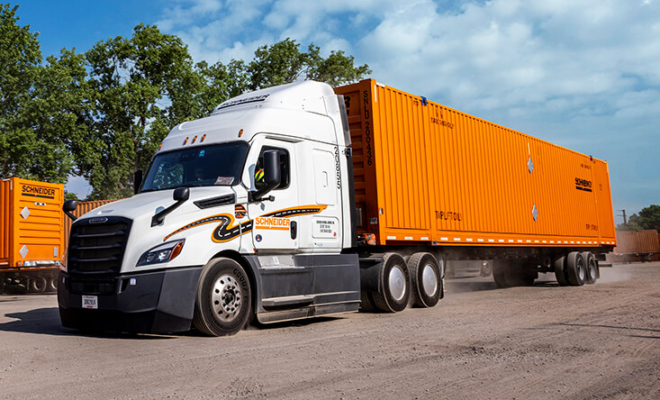All about intermodal trucking jobs

They have become more popular over the last few years, so if you’re looking for a stable career in trucking, it’s worth knowing what’s involved. If you’re interested in intermodal trucking jobs, then learning about the pros and cons of this type of work will help you decide if it’s right for you. It pays to have realistic expectations when beginning any new career, especially one as important as driving trucks.
Intermodal shipping is a method of transportation that involves using two or more modes of transport. For example, intermodal shipping involves using trucks, ships and trains to ship goods from one place to another. Intermodal shipping reduces the environmental impact because it uses fewer trucks than traditional modes of shipping.
Intermodal, or “combined” trucking, as it’s often known, means that a shipment will be transported by more than one type of vehicle over its journey — whether that journey is across the country or just down the street. Sometimes, this can mean getting your cargo on a train and off again at another location along its route. It means driving onto a ferry for an ocean voyage before continuing onto land with another trucking company waiting for your cargo upon arrival in their port city.
What Do Intermodal Truckers Do?
Being an intermodal trucker means you’ll drive trailers. You’ll move freight from one place to another and be responsible for the safety of your cargo and the vehicle. In short, you’re in charge of moving stuff effectively and safely across the country by sea or land transportation.
What can I expect as an intermodal driver?
Some of the requirements that come with being an intermodal driver include:
- Having a valid commercial driver’s license (CDL) with passenger endorsement and air brake certification;
- Having no more than two preventable accidents or violations within three years;
- Being at least 21 years old;
- Passing drug tests once every year;
Advantages of Intermodal Trucking
- Flexible hours: Intermodal trucking jobs offer a good work-life balance, as you can choose your schedule. This is great if you have children or need to take care of an elderly parent.
- Good pay: The average annual salary for an intermodal truck driver is $55,000 per year.
- Good benefits: Intermodal drivers are offered excellent health care coverage and retirement plans through their employers, ensuring they’re taken care of financially throughout their careers.
- Good work environment: Intermodal drivers aren’t just delivering freight from one place to another — they’re also responsible for ensuring that cargo arrives safely at its destination in perfect condition. Each time it travels across state lines or overseas via sea freight transport ships and container vessels worldwide! This means lots of responsibility and fulfilment once everything goes smoothly on each trip!
Disadvantages of Intermodal Trucking
- Long hours and a lack of personal time are the top two drawbacks to intermodal trucking. For example, if you’re hauling freight from Los Angeles to Chicago, your workday begins at 4:00 AM (or earlier) and ends at 8:00 PM or later. You might get home after 9:00 PM. This doesn’t give you much time for anything else in your life, including family, friends, exercise and relaxation.
- In addition to long hours and no personal time outside of workdays, sleep deprivation is another major downside to intermodal trucking jobs. After all those hours on the road—and frequently even before—you need restful sleep just as much as any other person for your brain and body to function properly during waking hours.
Conclusion
The first step toward an intermodal job is getting your CDL and entering the trucking industry. Once you’re working as a truck driver, check out these tips for finding intermodal jobs in your area:
Check with local companies, schools, and other organizations that may be hiring drivers. Ask around at your local truck stop or weigh station to see if anyone has heard of any openings in the area. Check online job sites for current job postings related to intermodal driving positions.















